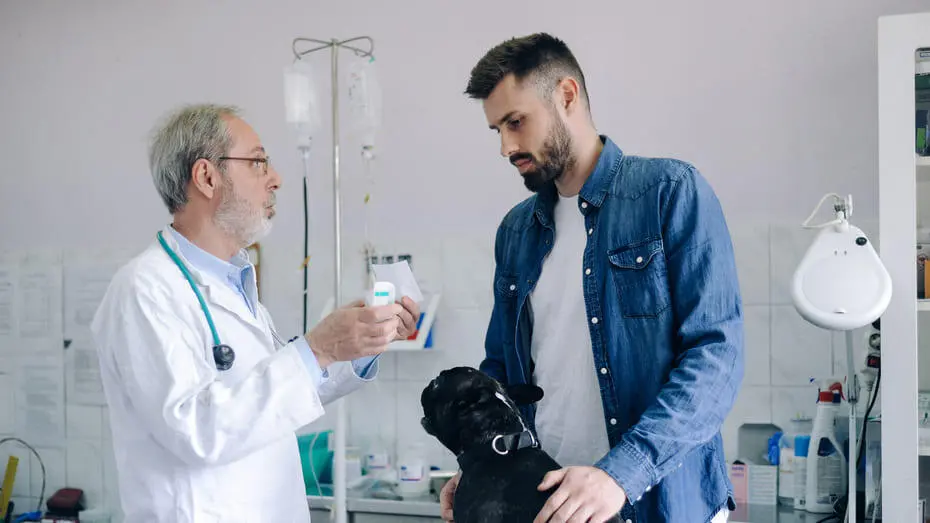
Sometimes, dogs require a course of antibiotics to help them get over an infection just like humans do. Antibiotics fall within the category of drugs that require a prescription, thus they may only be given to animals by a veterinarian.
The question “are antibiotics safe for dogs?” may cross your mind. In such case, we hope you’ll find this tutorial helpful. Keep reading to learn about the many dog antibiotics available and why it’s critical to adhere to your veterinarian’s dosage recommendations.
Canines, often quite healthy, use antibiotics?
Antibiotics, like all drugs, can have unwanted consequences in people. Although these reactions are often minimal, you should contact your veterinarian if you notice anything out of the ordinary while your pet is on antibiotics. Always make sure your vet has prescribed the medications for your dog. When a dog is diagnosed with a bacterial illness, antibiotics are the first line of treatment. There may be problems if the infection is not treated in a timely fashion.
Types of antibiotics for dogs

There are many different types of antibiotic and we’ve put together a short list of some of these, including the reasons a vet might prescribe them.
Amoxicillin for dogs
Amoxicillin is an antibiotic used to treat a variety of infections in canine patients, including those of the skin, respiratory system, and urinary tract. It’s an antibiotic in the same family as penicillin, but it can survive stomach acid better. It accomplishes its goals by interfering with the assembly of bacterial cell walls. Amoxicillin comes in both tablet and liquid form.
Cephalexin for dogs – often used to treat bacterial skin infections (pyoderma) in dogs.
Enrofloxacin for dogs – used for a range of bacterial infections.
Gentamicin for dogs – used to treat certain bacterial ear infections.
Metronidazole for dogs– used to treat bacterial infections and some parasites.
Sulfamethoxazole-Trimethoprim for dogs – used for treating urinary tract, skin, respiratory, or digestive tract infections.
Tetracycline for dogs – sometimes used for inflammatory skin conditions in dogs.
Dogs should only take antibiotics if a veterinarian has recommended them. Inappropriate antibiotic use can do more harm than benefit and boost the development of drug resistance. Keep your dog on the antibiotics for the whole time period that was recommended.
To what end may my dog’s infection need antibiotics?

The need for antibiotics in your dog can be caused by a wide variety of bacterial illnesses. Bacterial infections are sometimes a complication of another disease. Examine the following list of possible canine antibiotic indications:
- Urine infections
- Eye infections
- Vestibular disease in dogs
- Mastitis
- Conjunctivitis
Contact your veterinarian immediately if your dog is exhibiting any of these symptoms or if you believe that any of these diseases may be harming your pet.
How do antibiotics affect dogs?
Antibiotics for dogs have very low rates of causing negative side effects, but when they occur, the consequences will be unique to each antibiotic. We’ve included some more information below on the types of allergy reactions that some dogs may experience.
Irritable bowel syndrome
Some antibiotics have been known to induce stomach distress. Your veterinarian may suggest giving antibiotics with meals to lessen this possibility. Here are several warning indicators:
- Nausea
- Vomiting
- Diarrhoea
- Loss of appetite
Disruption of the microbiome
Antibiotics for dogs have the potential to wipe out both harmful and helpful germs. There will be an internal imbalance of gut flora, which may manifest as diarrhea. The symptoms of this might take some time to manifest, so keep a watch on your dog for a while. In order to restore the balance of healthy bacteria and maintain your dog’s fighting condition, your doctor may suggest probiotics.
Sensitiveness to allergens
Antibiotic-induced allergic responses in dogs are infrequent, although they can occur. If you have given your dog antibiotics before, even if they were the same sort, keep a close check on them just in case they have an allergic response. The following are some of the symptoms of a dog antibiotic allergy:
- Excessive salivation
- Skin rashes
- Difficulty breathing
- Seizures
- Swollen face
- Vomiting
- Diarrhoea
If you see any of these symptoms in your dog after giving them antibiotics, make sure to give your vet a call as soon as possible. They will be able to help you with the next steps.
Canine antibiotics: safe for humans to use?
Antibiotics for dogs should only be given when specifically directed to do so by a veterinarian. While canine amoxicillin is chemically identical to human amoxicillin, veterinarians are only allowed to prescribe antibiotics that have been approved for use in dogs. In accordance with the so-called “prescribing cascade,” veterinarians are permitted to prescribe human antibiotics to treat canine infections when no canine medication is effective.